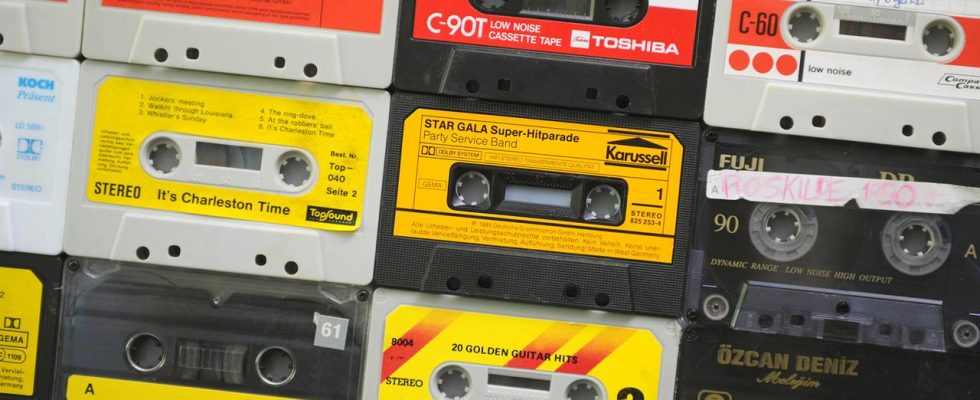In 1963, the cassette revolutionized the music scene. Suddenly everyone could put together their own mixtape. Then the CD came and the cassette got dusty on the shelf. Now she’s back.
“Then all you have to do is press the start button and music starts playing immediately.” When the music cassette was presented in 1963 at the Funkausstellung in Berlin, no one could have guessed how much this small piece of plastic would change music history.
Significantly smaller and cheaper than the vinyl record that was prevalent at the time, the cassette was actually intended as a talking notebook, but was then used in a completely different way. Thanks to the recording function, millions of people became producers for the first time. It was very easy to record songs on the radio and assemble them into your own mixtapes.
The self-composed mixtape was particularly popular as a gift for friends. Even if the playback always led to a pile of tape salad and ruined all the work.
Walkman brought music to the streets
With the Walkman, the portable cassette player, music also conquered the streets in the 1980s. But the hype ended shortly thereafter. The CD came onto the market and was simply more versatile as a digital music storage device. The cassettes were gathering dust on the shelf.
But for some time now, world stars like Justin Bieber and Taylor Swift have been releasing their albums on cassettes again. And German artists like Casper have also recognized the potential. How is the new boom coming about?
“A Relaxing Story”
“I think it’s just a very relaxing thing to listen to a cassette,” says Martin Maag, who owns a record store in Ulm. “You can’t skip, you can’t just do the next track. It takes endless patience.”
Young people in particular asked him in the shop for the cassettes. His range is still manageable, and he also has to buy a new cassette recorder first. But the prices for used devices have been rising again for a short time.
For listening – or for the shelf?
The trend started a few years ago at the Nuclear Blast music label in Donzdorf, Swabia. More and more bands wanted their albums as a special edition on cassette. But how many customers actually insert the cassette?
When it comes to records, it’s “relatively well known that 50 percent of people who buy vinyl don’t even have a record player at home,” says Marcus Hammer of the label. “So that’s an album that looks good on the shelf. I think it’s pretty much the same with the cassette.”
The boom in vinyl records was also fueled by the very special sound of records. In the case of the cassette, it’s probably mainly nostalgia. “The cassette has a certain cult factor. In terms of sound quality, the cassette can’t really keep up with MP3 or vinyl records,” says Michael Langbein from the Nuclear Blast label in an interview tagesschau.de.
The sound shouldn’t be perfect
For Christofer Jost, professor at the Institute for Media Culture Studies at the University of Freiburg, the sound is an important feature of the cassette. Buyers deliberately decided against the perfect sound.
“The cassette is not only a medium, but also a symbol carrier,” he says. “We oppose the usual mechanisms that are at work in the music industry and consumer electronics.”
Film industry fuels the trend
The retro trend was also encouraged by the film industry. The cassette appears again and again in the series “Stranger Things” and also in the film series “Guardians of the Galaxy”. In the USA in particular, this has boosted sales figures again. In Germany, radio plays such as “Drei ???” and “Bibi and Tina” popular.
Even if the trend towards the cassette seems modest behind that of the vinyl disc: On the 60th birthday of the cassette, the tape salad is well on its way back into German living rooms.

